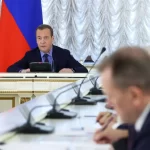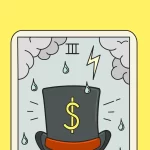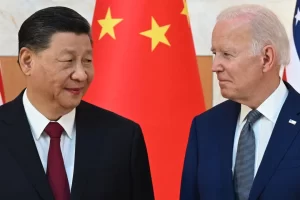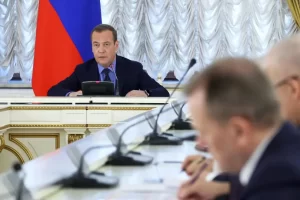Inflation in the North-West region, according to Rosstat, since the beginning of the year has amounted to 6.1%, that is, it was even lower than the national average (6.6%). By the end of the year, as the Central Bank predicts , it will grow to a maximum of 7.5%. But given the current state of the Russian economy, official figures mean very little: real price growth differs from statistics several times. Sometimes the authorities do not have time and simply do not know how to adequately respond to the situation. A Sever.Realii correspondent talks about how 2023 affected the wallets of Russians and why official statistics diverge from the real situation in the country.
“Poverty Tax”
On an everyday level, different people experience rising prices, of course, in different ways.
St. Petersburg resident Anna, deputy director of an IT company that has successfully integrated into the new Russian economy, lives alone in her own apartment. She says that prices for many categories of products and things have become higher, but she does not attach much importance to this.
– I don’t really pay attention to such things. One noticeable thing is that champagne has become more expensive. In the summer, my favorite prosecco cost 800 rubles, now the price has risen to 1200. But all alcohol has gone up in price – probably not for long, for the New Year. Coffee seems to cost the same as before. Cream, yoghurt, milk – I don’t have the impression that they are incredibly expensive,” says Anna. – Of course, I used to buy food and litter for cats for a month for 5 thousand rubles, but now it costs 8 thousand. In the summer, my business lunch cost 430 rubles, now it’s 470. I won’t say that the price has increased significantly, but you can feel it. And some products basically disappeared. I loved making steamed mussels. Previously, there were suitable ones for this in every supermarket, now there are mussels on sale, but there are no mussels that I loved.
Dmitry, a construction foreman, has completely different impressions.
– Everything is becoming increasingly expensive. I don’t concentrate on it so as not to get upset. But four months ago my cigarettes cost 180 rubles, now they are 260. That is, everything has increased by 20–30% in five months. A year ago, dog food cost 5,500, now 7,500 per bag. Everything reflects the price of gasoline and other taxes – thank God, I closed my business and now I don’t think about how to pay them. In 2022, buckwheat, salt, and sugar disappeared. Now this is not the case, although the assortment has shrunk in everything, and the quality of the remaining goods has dropped by another 30%. A trivial example: we had to replace the faucet in the bathroom, we found exactly the same one, the brand, the same manufacturer – and it was twice as light in weight,” says Dmitry.
It’s not for nothing that inflation is called a “poverty tax” – it’s hardest for the poor, because for them a 10% increase in expenses does not mean giving up the next trip to the cinema, but switching to a stricter diet.
– I buy a very limited selection: milk, cottage cheese, sour cream, eggs, vegetables, occasionally chicken, I try to get everything at a discount. And everything has gone up in price, no matter what. Except that potatoes and cabbage have fallen in price since the fall – probably a late harvest. I pickled the cabbage at home, and that’s what we eat,” says retired Galina. – It’s getting more expensive gradually, you won’t even understand when prices became so high: eggs didn’t immediately rise in price from 80 to 140 rubles per dozen. There were no queues, no rush, nothing was missing – but here we are, what we have. The growth is very strong, but it’s hard to say how much everything has become more expensive on average – prices vary greatly in stores, even in chain stores. Last year, the pension was increased by a penny, and prices rose significantly. Some people have larger pensions, but my husband and I are simple engineers; we only have enough for food and utilities.
Our interlocutors celebrate the New Year with different moods:
“I don’t think prices will rise much next year.” If there is an increase, it will be by 5–7%. When it all started, it was noticeable in everyday purchases. “I won’t say that now,” Anna is optimistic.
Dmitry has a fundamentally different view:
– I haven’t planned my finances for more than a month for a long time. But I know for sure that this will not end tomorrow, next year inflation will rise, and in 2025, judging by the situation in the construction industry, the role of the state in the economy will become decisive and collapse will occur. Since the state is not able to hold its own pants, let alone manage anything.
Pensioner Galina says that she has not made major purchases for a long time and does not plan to do so in the new year.
– I don’t know what “inflation in general” is – we haven’t bought clothes or shoes for many years, we wear out old ones. I don’t know how people answer about inflation expectations, I don’t think the president knows that either. I only know that we will buy less and eat less,” Galina suggests.
How is inflation calculated in Russia?
Inflation has a dozen scientific definitions and methods of calculation, but in most cases it officially means an increase in retail prices on average across the country. It is expressed in the consumer price index (CPI). Data on the CPI in Russia is collected, analyzed and published by the Federal Statistics Service – Rosstat, which monitors the indicator every week.
Rosstat monitors prices of more than 700 thousand different goods and services in more than 80 thousand organizations and surveys more than 78 thousand respondents. Then similar positions are grouped (sausages – to sausages, nails – to nails), and a base of more than five hundred groups is obtained, about a quarter of which are services and food products, and the rest are non-food products. Depending on the share of citizens’ expenses, each group is assigned a weight: for example, potatoes or washing powders it is greater, for pineapples and perfumes it is less.
The problem here is that Rosstat takes into account the rise in prices for everything at once and everywhere. For example, car sharing in the Russian Federation is available only in a couple of dozen cities, but it is in the database. And changes in its prices affect the average inflation in the country. There are also simpler and more understandable things, for example education: the share of costs for it on average is not so small, but at the moment only a small part of the population pays for it. Finally, many people don’t even buy new outerwear every season. If some of these things do not become more expensive, then inflation on average across the country decreases, but not everyone sees this.
At the same time, Rosstat takes into account the most purchased items. And when someone’s personal favorite brisket suddenly doubles in price and people stop buying it, the person sees 100% inflation on the store shelf. And Rosstat crosses the product off the list because simply no one buys it. And the contribution of this brisket to official inflation becomes zero.
At the same time, Rosstat’s model is positioned as “open” and in compliance with all international standards, so that even if someone doesn’t like something, all the answers are approximately the same : “Our current methodology for assessing inflation is based not on the whims of Rosstat, but on theoretical baggage and practical experience in assessing inflation accumulated throughout the world over more than a century.”
In November 2023, inflation was 7.47% (annualized over the last 12 months), which is 0.79 more than the month before. The nature of the current inflation is, first of all, huge cash injections into military production, as well as salaries for military personnel and “funeral” salaries for the families of fallen military personnel. Plus the cessation of supplies from profitable foreign manufacturers. Now there are fewer such opportunities, says the former head of one of the largest Russian financial holdings, who asked for anonymity.
The Central Bank can fight inflation by basically changing the money supply using the key rate: the more expensive it costs participants in the economy to raise money, the less money there is in the economy. True, as a result, over time there are fewer participants: loans become more expensive, businesses close.
– You can play with mandatory bank reserves, their changes give a similar result, the Chinese love this instrument, but the Russian Central Bank rarely resorts to it – except in terms of unsecured lending and, recently, in relation to mortgages. The remaining instruments are completely exotic for us and, as a rule, secondary to the key rate,” continues the financier. – An increase in the key rate is unfavorable for businesses that depend on lending or whose clients depend on loans. For example, the same housing construction. Consumer activity also, as a rule, falls when the key rate rises. True, sometimes it falls for other reasons, for example, due to uncertainty and increased risks. That is, the reasons for raising the rate themselves often lead to a decrease in economic activity, and sometimes turn out to be the main reason. In any case, you cannot live with extremely high rates all the time.
The government has a different task: it needs to account for economic growth. It can also fight inflation, say, by reducing the flow of preferential financing. But then, you may have to answer for the failure in GDP growth and the curtailment of construction, and the latter is called President Vladimir Putin’s “favorite toy.”
The government made attempts to combat inflation. In the fall of this year, it decided to stop the rise in gasoline prices by banning the export of petroleum products, but after two weeks the ban had to be lifted in parts.
– Also, shortly before this, they ruined the business of grain farmers (we are talking about a ban on the export of durum wheat from December 1, 2023 to May 2024. – SR) . Markets for raw materials and grains are highly competitive, and such interruptions greatly worsen the prospects for future exports. This is precisely reactionary politics, plugging holes. It’s the same story with the emergency opening of the import of eggs and meat: what’s the point of expanding production if next time the government solves the problem in the same way? The immediate benefit outweighs the strategic one, the expert states.
Nabiullina’s mistake
The increase in the key rate that occurred this year is not a unique case. The outbreak of war was followed by a rise in prices, the Central Bank sharply raised the rate and brought down the excitement.
But the sharp decline in official inflation at the beginning of 2023 looked so beautiful that none of the officials and state bankers became wary. Although it was obvious to economists that the problem could not be solved with just a short-term rate increase. In April of this year, “factors restraining price growth” began to end, said a May review by the government-affiliated Center for Macroeconomic Analysis and Short-Term Forecasting (CMAFF).
– This is not a secret at all – everyone assumed a second jump. There was a similar picture in 2015, but then the delay was almost five years, and we got an increase in inflation in 2020. It’s not only Covid that is to blame, but also the accumulated effect,” says Sever.Realii’s interlocutor. – In 2022, the initial surge was sharper and growth resumed faster. Nabiullina’s mistake is objective, not subjective. Coincidentally, at that moment inflation was formally falling, the economy was growing, and even if the Central Bank wanted to raise the rate, no one would understand this at all.
And here we return to another problem: ideally, the model for calculating the consumer price index should be unchanged. Of course, it has to be changed from time to time: cross out sandals and kerosene lamps, add all sorts of smartphones. But in a normal situation, these changes amount to a fraction of a percent per year. Too much has changed for Russian consumers in 2022, and this process has been both abrupt and long-lasting – one change followed another. As a result, Rosstat’s accounting model simply fell apart.
“With the structure of inflation, “everything is complicated” – and it corresponds, rather, to a situation of increased price growth rather than its suppression. The dynamics of prices for fruits and vegetables , as usual in recent months, has become the most important factor influencing the scale of inflation as a whole. Formally, prices for “It fell by 3.6% in three weeks. However, there is complete chaos at the price level for individual goods,” TsMAKP experts wrote in the spring.
Even foreign experts noticed this: for example, in a study by specialists from the Bank of Israel and the Bank of Italy, they delicately noted that the results of the model they used for calculating Russian inflation most of the time largely coincided with the official data of Rosstat, but after the start of the war for a “significant” share of categories this compliance has decreased markedly. In other words, “the numbers stopped beating.”
Everything was distorted, including the seasonal factor. “After the introduction of [sanctions] restrictions, seasonality became more pronounced due to a more limited geography of supplies: the rise in prices before the new harvest is stronger, as well as the fall in prices in August and subsequent months,” note the authors of the authoritative telegram channel “Cold Calculation” “Such changes in seasonality are not immediately clear—several years of data are required to reveal them, meaning we will not be able to say for several years exactly how the 2022 changes will affect the intra-annual cycle in prices.”
But the Russian authorities, as they say, “believed in success.” The Central Bank continued to keep the key rate at 7.5% until July. The government continued and continues to pump the economy with money and soft loans.
“In the Russian Federation, lending is growing at an incredible pace. But mortgage loans are growing at the fastest pace. In just one year, the volume of issued mortgages increased by 23%. The main reason is the preferential mortgage at 8%, which continues to work, despite the increase in rates. Should this bother us? “Definitely yes,” investment banker Evgeniy Kogan wrote in August. “The Central Bank raised the key rate to 12% to combat rising prices and cool down lending. And yes, consumer loans will stop growing so much. And ordinary mortgages too. But preferential mortgages at 8 % works at least until the beginning of 2024. This means that the demand for real estate will grow, and with it inflation. This is contrary to what our Central Bank is trying to achieve. Again, the right hand does not know what the left leg is doing?”
And this, in his opinion, is not the only problem. “What’s happening with corporate lending in the Russian Federation is no less annoying. It is also growing very quickly (almost like mortgages): +21% (year-on-year). Just think, over the year, loans to legal entities grew by 11 trillion rubles!” – writes Kogan.
At the beginning of December 2023, the Chairman of the Central Bank, Elvira Nabiullina, said that perhaps the peak of inflation would soon be passed, but at the end of the month she gave an important interview to RBC, in which her words did not sound so confident. And, among other things, Nabiullina said that “the Central Bank should have started raising the key rate in the spring of 2023.”
The question of whether the Central Bank has managed to stop the growth of inflation now and whether it will be able to do this in the near future remains open. Even if the regulator sees a decrease in inflation, it will take at least two to three months to ensure the stability of the effect.
“With the help of the key rate, the Bank of Russia influences consumer demand and, ultimately, inflation. For the impulse from a change in the key rate to pass through all of the above links and fully affect inflation, it takes from a year to a year and a half,” – Marina Myasnikova, manager of the Samara branch of the Volgo-Vyatka main department of the Bank of Russia, noted in a recent interview.
Almost none of the experts undertake to comment on the economic prospects for 2024 in this regard – if only because of the plans to increase government spending by 22.3% , which is twice the average annual rate , including the planned increase in defense spending by 68.3% in relation to by 2023 and triple the pre-war level.
The overwhelming majority of comments boil down to something that definitely won’t happen: “We expect that the first reduction in the key rate will occur no earlier than the second half of 2024, and by the end of 2024 it will be above 13.00%,” the authors of the telegram write . channel “Hard numbers”.
Among the related factors, they note that although the government has finally tightened the conditions of the main preferential mortgage program, the changes do not affect the family program, and the maximum loan amount under the program for the Far East and the Arctic was even increased from 6 to 9 million rubles. At the same time, price expectations of enterprises remained elevated in December – retailers expect that in the next three months selling prices will grow by 12.2% in annual terms.
Source: Severreal






































